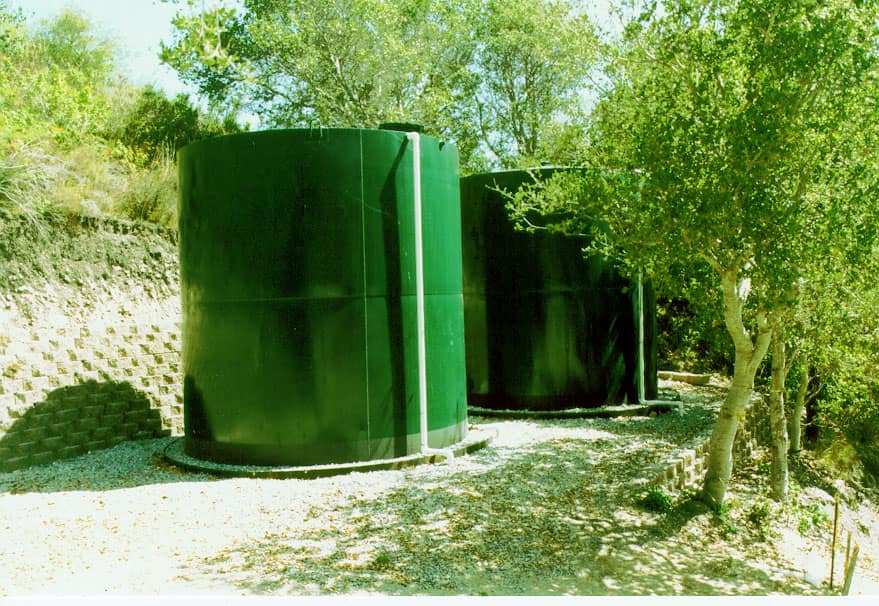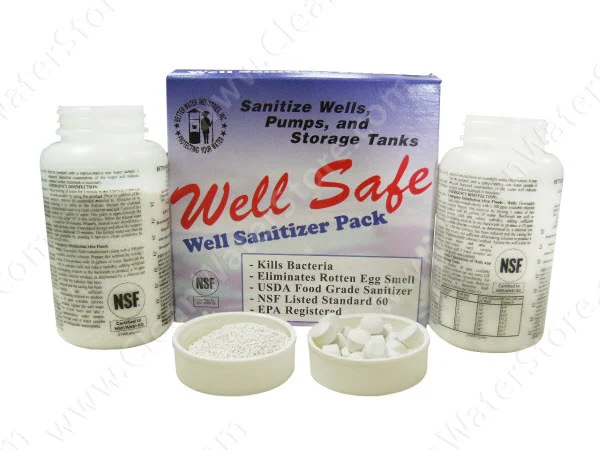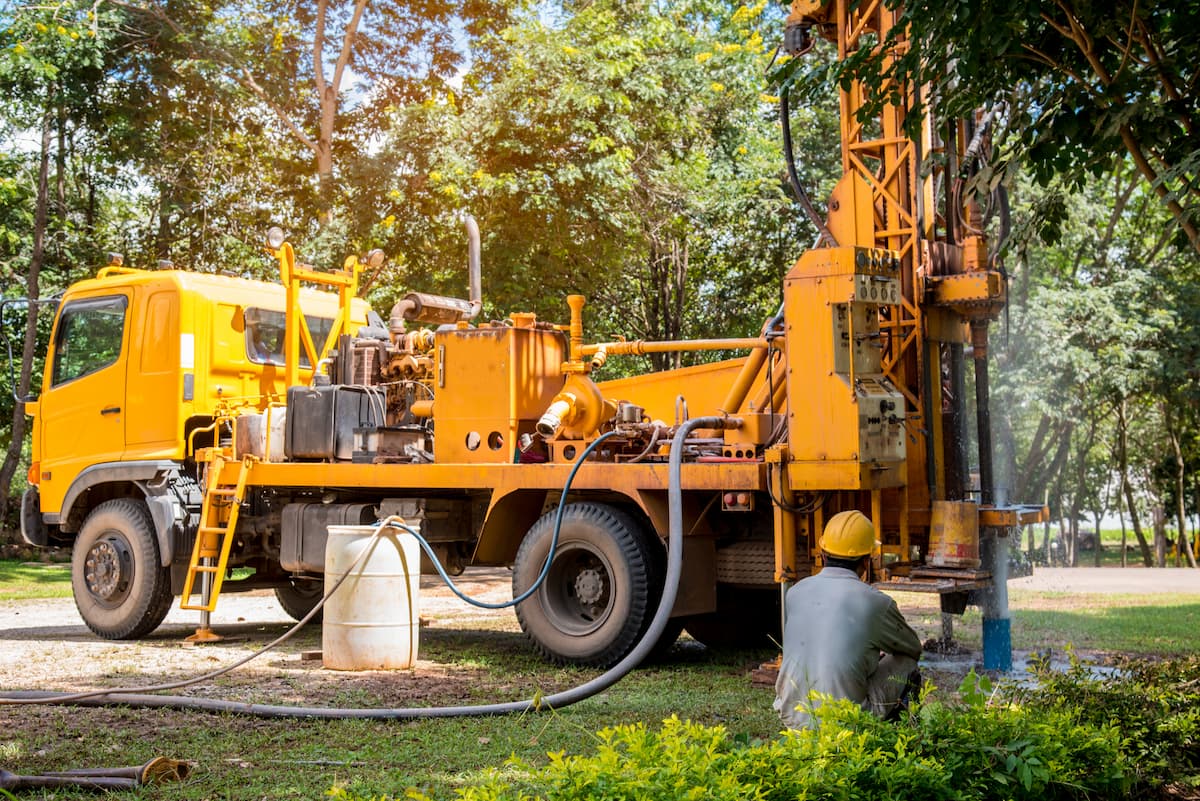No Room for a Chlorinator? Use This Alternative Method to Eliminate Iron Bacteria
-
Iron Bacteria can easily enter your well during routine maintenance, especially after well drilling or pump service. These small organisms thrive in water with high iron content and can quickly multiply, creating issues in both residential and commercial water systems.
They interact with iron and oxygen to form rust-like deposits that reduce water quality, clog plumbing, and produce unpleasant odors. Over time, Iron Bacteria can accumulate in appliances and pipes, forming biofilm and sludge that affect flow rates, increase maintenance needs, and leave behind unsightly stains in sinks, tubs, and toilets.
Chlorine, ozone, or peroxide can kill bacteria and inhibit its recurrence when continually injected into water supplies, however, continuous injection systems require a bit of available space for installation and proper operation. These disinfectants are effective but may not be feasible for everyone. While some folks would rather not spend the money on these additional disinfection systems, others don’t have the room for them.
If you fall into either of these groups, know that you can still rid your plumbing (and the water that flows through it) of iron and iron bacteria – you’ll have to expend a bit more effort to disinfect your pipes and ensure that they remain clean and bacteria-free.
The best way to clean your pipes without continuous injection of chlorine, ozone, or peroxide is to periodically shock-chlorinate them with household chlorine bleach or dry chlorine pellets. Without a continuous injection of a disinfectant, your iron bacteria will likely resurface and continue to cause problems in your water, and so it is important that you shock-chlorinate your well around 2-3 times a year if you are experiencing bacteria and not using a continuous chlorinator. Effective treatment strategies involve not just killing the bacteria but also physically removing oxidized metals and residues to improve overall water quality.
It’s also important to choose an iron filter that can withstand exposure to chlorine without harming the filter media. Pro-OX iron filters and Greensand Iron Filters can be sanitized with chlorine bleach; however, some iron filters, such as Birm iron filters, should not be exposed to chlorine as it can harm the filter media.
Introduction to Iron Bacteria
Iron bacteria are microorganisms that thrive in environments with high iron content, utilizing iron as their primary energy source. These bacteria can grow in various water sources, including private wells, public water supplies, and natural bodies of water. The presence of iron bacteria can lead to unpleasant odors, tastes, and the discoloration of water, as well as corrosion in plumbing systems, affecting their appearance and making them unappealing for consumption or recreational use.
Eliminating iron bacteria from water is crucial to maintaining clean and healthy water supplies. In this article, we will discuss the causes, effects, and treatment techniques for iron bacteria in water, including chemical treatment, physical removal, and shock chlorination.
Understanding the Risks
Iron bacteria in water can pose significant risks to health, water quality, and equipment. These microorganisms thrive in environments with high iron content, using iron as their energy source. Here's what you need to know:
- Unpleasant Aesthetics
Iron bacteria produce rust-colored deposits, oily sheens, and foul odors in surface water, making it unappealing for drinking or recreational use. - Plumbing and Equipment Damage
These bacteria clog pipes, pumps, and plumbing fixtures, leading to reduced water flow and potential equipment failure, which can be costly to repair or replace. - Commercial and Industrial Losses
In commercial settings, iron bacteria can cause equipment damage, downtime, and increased maintenance, resulting in significant financial losses. - Growth in High-Iron Environments
Elevated levels of dissolved iron in water support the growth of iron bacteria, which also affect the taste and odor of water and may form toxic compounds that harm humans and animals. - Common Entry Points
Iron bacteria can be introduced through human activities like drilling, repairs, or maintenance. They’re commonly found in soil, surface waters, and wells. - Detection Methods
Laboratory testing, including microscopic examination, culture tests, and molecular methods, can help confirm their presence and inform the development of a proper treatment plan. - Treatment Options
- Physical Removal
- Chemical Treatment
- Pasteurization
- Shock Chlorination
This widely used method involves a disinfection stage followed by physical removal and filtration. It must be applied carefully to avoid damage or health risks. - Ongoing Maintenance
Regular inspection and maintenance of your water system—including the well casing and plumbing—helps prevent the buildup of iron bacteria and maintain water quality. - Health and Safety Concerns
Iron bacteria can produce toxic byproducts, such as manganese, which contributes to both health risks and equipment corrosion. - System Efficiency and Appearance
Slimy coatings formed by iron bacteria reduce water flow, increase the risk of clogging, and affect the water’s appearance and odor, making it unpleasant to use or consume. - Comprehensive Prevention Strategy
- Ongoing monitoring
- Routine testing
- Proper system upkeep
- The use of appropriate treatment methods (e.g., chlorination, filtration, pasteurization)
By understanding these risks and taking proactive steps, you can effectively manage iron bacteria and maintain a safe, efficient water system.
Identifying Iron Bacteria in Water
Identifying iron bacteria in water can be challenging; however, several signs indicate their presence. Iron bacteria can create rust-colored deposits in water, giving it a reddish-brown color. They can also produce an oily sheen on the water’s surface, causing unpleasant odors and tastes.
Laboratories can provide detailed analysis and information on the presence of iron bacteria and other contaminants. The rotten egg smell, sewage-like smell, or fuel-like taste are common signs of iron bacteria.
Additionally, iron bacteria can create slimy coatings in water tanks, pipes, and fixtures. To detect iron bacteria, water testing at a laboratory can confirm their presence.
Collecting a water sample for laboratory analysis is essential for accurate identification. It is essential to test for other contaminants, such as nitrates, coliform bacteria, and E. coli, to ensure the water is safe for consumption.
Alternative to Traditional Methods
Traditional methods for eliminating iron bacteria, such as chemical treatment and physical removal, can be effective; however, they may have limitations. Alternative methods, such as pasteurization and chlorine treatment, can be employed to reduce the presence of iron bacteria. Pasteurization involves injecting steam or hot water into the well, which can be effective in killing iron bacteria.
Ozone treatment can also be prepared on-site using ozone generators, although it requires careful handling and attention to detail. Chlorine treatment, on the other hand, involves using chlorine to disinfect the well and system. However, chlorine may not always get rid of iron bacteria, and the concentration of chlorine and the contact time with the bacteria are crucial.
It is essential to determine the most effective approach for eliminating iron bacteria, taking into account the specific conditions and requirements of the well or water system. However, the high reactivity and toxicity of ozone can complicate its use, particularly in the formation of potentially harmful byproducts.
Conclusion on Eliminating Iron Bacteria with Limited Space
Eliminating iron bacteria from water can be a challenging task, especially in areas with limited space. Maintaining a clean area around the well is crucial to prevent the growth of iron bacteria. However, it is crucial to maintain clean and healthy water supplies. The first step in eliminating iron bacteria is to identify their presence and determine the best treatment technique.
Chemical treatment, physical removal, and shock chlorination are common methods used to eliminate iron bacteria. It is essential to follow instructions carefully and consider the specific conditions and requirements of the well or water system.
Regular maintenance and monitoring of the well’s system are crucial to prevent the growth of iron bacteria and ensure the water remains free from contamination. By understanding the causes and effects of iron bacteria and employing effective treatment techniques, we can effectively control iron bacteria and maintain clean, healthy water supplies.
To browse our iron filters, chlorine injectors, and other water treatment systems, check out our online store. Finally, if you still have any questions or concerns, you can reach us at support@cleanwaterstore.com or on Facebook for quick, personalized assistance with your particular water problem. Thanks for reading!















